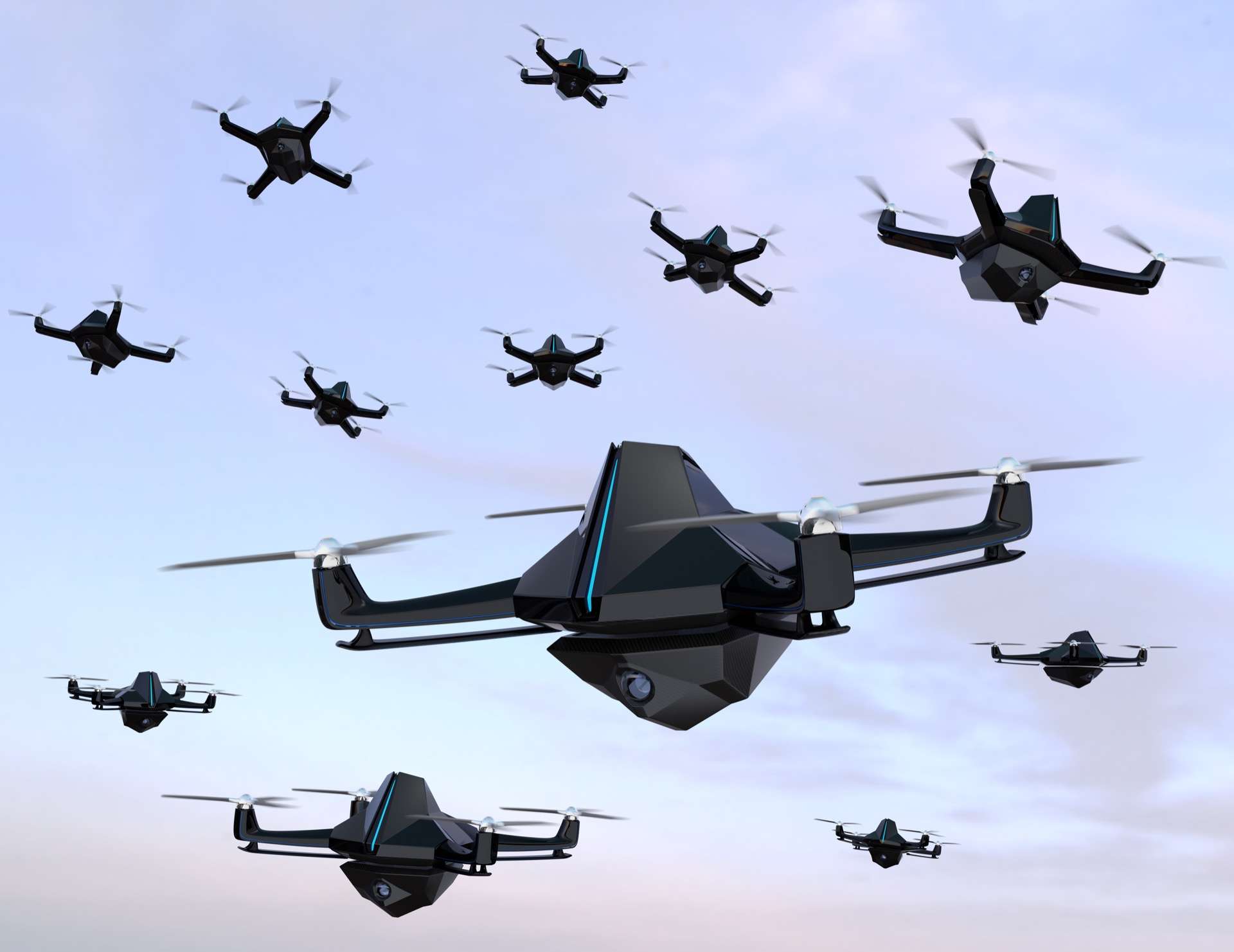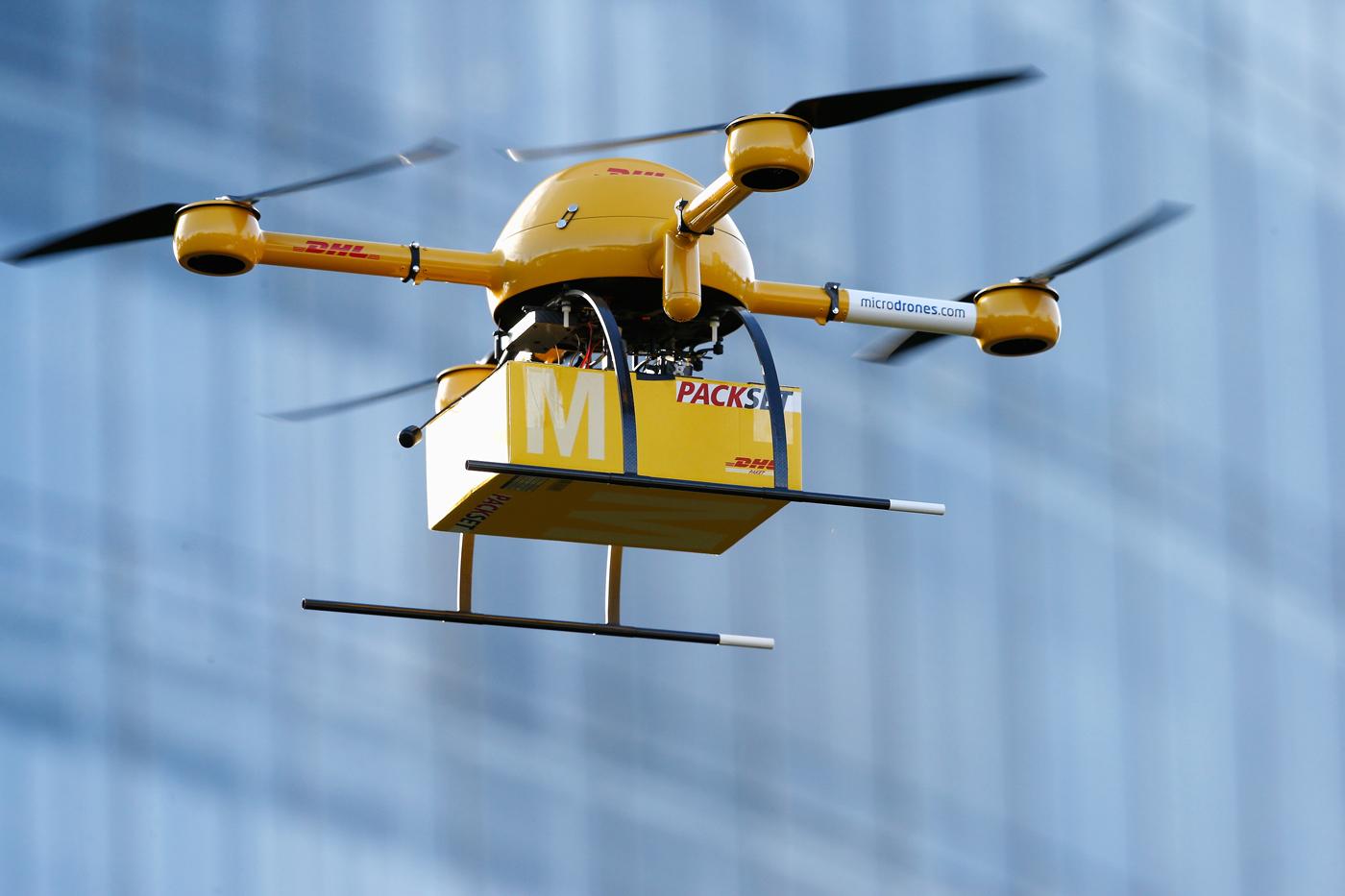AI and the Future of Autonomous Drones

The rapid advancements in artificial intelligence (AI) are poised to revolutionize various industries, and the field of autonomous drones is no exception. AI-powered drones hold immense potential to transform the way we utilize unmanned aerial vehicles (UAVs) for a wide range of applications. Here’s how AI is shaping the future of autonomous drones:

-
Enhanced Autonomy and Navigation:

AI algorithms enable drones to navigate complex environments with greater autonomy. Drones equipped with AI can analyze their surroundings using sensors, cameras, and GPS data, allowing them to make real-time decisions, adjust their flight path, and avoid obstacles without human intervention. This enhanced autonomy paves the way for drones to operate in challenging conditions, such as dense urban areas, remote locations, or hazardous environments.
-
Improved Object Detection and Recognition:
AI algorithms excel at image and object recognition tasks. When integrated with drones, AI can empower UAVs to identify and track specific objects or people of interest in real-time. This capability finds applications in search and rescue operations, surveillance, and security. AI-powered drones can quickly locate missing persons, monitor remote areas for suspicious activities, or even detect wildlife populations during ecological surveys.
-
Precision Delivery and Package Transportation:
AI enhances the accuracy and efficiency of drone-based delivery services. By utilizing AI algorithms, drones can optimize their flight routes, avoid obstacles, and select the most suitable landing locations for package delivery. AI-powered drones can operate in urban environments, remote areas, or humanitarian crisis zones, enabling rapid and reliable package transportation, even in challenging conditions.
-
Real-Time Data Analysis and Interpretation:
AI algorithms can analyze data collected by drones in real-time. This allows for immediate insights and actionable information. For example, drones equipped with AI can analyze crop health during agricultural surveys, detect anomalies in infrastructure during inspections, or monitor air quality in urban areas. The real-time analysis capability enables quick decision-making and timely interventions.
-
Predictive Maintenance and Condition Monitoring:
AI algorithms can be used to predict the condition and health of drone components. By analyzing sensor data, AI can identify potential problems early on, preventing unexpected failures and accidents. This predictive maintenance approach enhances the overall safety and reliability of autonomous drone operations.
-
Human-UAV Collaboration and Control:
AI plays a crucial role in facilitating human-UAV collaboration. AI-powered drones can interpret human intentions, understand speech commands, and respond accordingly. This enables seamless interaction between human operators and autonomous drones, enhancing efficiency and allowing humans to focus on higher-level tasks.
The integration of AI with autonomous drones opens up a world of possibilities, leading to a future where drones perform complex tasks autonomously. As AI technology continues to advance, autonomous drones will become increasingly sophisticated, reliable, and capable of operating in diverse environments. These advancements hold the promise of revolutionizing industries and unlocking new frontiers in the world of aerial technology.# Ai And The Future Of Autonomous Drones
Executive Summary
The integration of artificial intelligence (AI) into drone technology is revolutionizing the industry, giving rise to autonomous drones capable of performing complex tasks with unparalleled precision and efficiency. Autonomous drones are equipped with advanced sensors, powerful processors, and sophisticated algorithms that enable them to operate independently, navigate complex environments, and make real-time decisions without human intervention.
This article explores the transformative role of AI in autonomous drones, the benefits and challenges of their adoption, and the potential applications in various industries. It provides insights into the latest advancements in technology, emerging trends, and industry predictions, showcasing the immense potential of autonomous drones to revolutionize industries and reshape the way we live and work.
Introduction
The fusion of AI and drones has created a technological marvel that is transforming industries and redefining possibilities. Autonomous drones, powered by the intelligence of AI, are capable of performing a wide range of tasks with unmatched accuracy, efficiency, and autonomy. From aerial mapping and inspection to delivery and surveillance, these drones are pushing the boundaries of innovation and revolutionizing various sectors around the world.
Five Applications Of Ai-Powered Drone Technology
1. Aerial Mapping And Surveying:
AI-driven drones are revolutionizing aerial mapping and surveying by providing accurate, real-time data. These drones are مجهز advanced sensors like cameras, lidar, and thermal imagers, allowing them to capture high-resolution images and 3D models of vast areas in a fraction of the time and cost compared to traditional methods.
- Real-Time Data Gathering: Autonomous drones equipped with sensors can capture real-time data, providing valuable insights for mapping and surveying projects.
- 3D Mapping: Drones equipped with lidar sensors can generate detailed 3D maps of terrain and infrastructure, facilitating land use planning and disaster management.
- Crop Monitoring: AI-powered drones are used in agriculture to monitor crop health, detect pests and diseases, and optimize irrigation systems.
2. Inspection And Remote Monitoring:
Industries such as energy, construction, and telecommunication harness the power of AI-based drones to conduct inspections quickly and efficiently. These drones can detect anomalies, identify damages, and assess structural integrity in hard-to-reach areas, minimizing human risks and downtime.
- Energy Infrastructure Inspection: Drones can autonomously inspect power lines, pipelines, and wind turbines, reducing downtime and increasing safety for technicians.
- Construction Site Monitoring: Drones provide real-time updates on construction progress, tracking project milestones, and monitoring adherence to safety regulations.
- Bridge And Building Inspection: AI-powered drones inspect bridges and buildings rapidly, enabling timely maintenance and preventing structural failures.
3. Delivery And Logistics:
Autonomous drones are revolutionizing the logistics sector through efficient package delivery. These drones overcome infrastructure and traffic challenges, providing rapid and cost-effective delivery of packages, especially in remote areas and for last-mile deliveries.
- Last-Mile Delivery: Drones deliver packages in areas with poor infrastructure, expanding the reach of e-commerce and postal services.
- Medical Supplies Delivery: AI-driven drones deliver medical supplies to remote communities, enhancing healthcare access in underserved areas.
- Emergency Supplies Delivery: Drones play a critical role in delivering emergency supplies during natural disasters, reaching affected areas quickly.
4. Security And Surveillance:
The integration of AI in drones offers unparalleled security and surveillance capabilities. Drones can fly autonomously, equipped with high-resolution cameras and sensors to monitor large areas, detect anomalies, and identify security breaches.
- Border Patrol And Security: Drones assist border patrol agents in monitoring remote areas, detecting illegal activities, and preventing cross-border crimes.
- Police Patrols: Drones augment police patrols, providing aerial surveillance, tracking suspects, and assisting in search and rescue operations.
- Event Security: Drones are used to monitor large events, detect threats, and ensure public safety.
5. Precision Agriculture:
AI-powered drones play an essential role in precision agriculture, enhancing crop yields while minimizing resource usage. These drones collect real-time data on crop health, soil conditions, and irrigation requirements, enabling farmers to make data-driven decisions and optimize their farming practices.
- Crop Health Monitoring: Drones equipped with sensors analyze crop health, detect early signs of stress, and facilitate targeted interventions.
- Soil Analysis: Drones collect soil samples for analysis, providing insights into soil composition and fertility, guiding efficient fertilizer usage.
- Variable Rate Application: Drones apply chemicals and fertilizers in precise amounts, maximizing crop yield and reducing environmental impact.
Conclusion
The fusion of AI and drone technology represents a leap forward in the field of autonomous systems. AI-powered autonomous drones are reshaping industries, enabling more efficient and cost-effective solutions to various challenges. As AI technology continues to evolve, we can expect to see even more remarkable advancements in drone capabilities, leading to transformative changes in areas such as delivery, surveillance, inspection, and agriculture.
Keyword Phrase Tags
- AI-Powered Drones
- Autonomous Drone Applications
- Drone Technology Advancements
- Emerging Trends in Drones
- AI Revolutionizing Drone Industry


I think that the use of drones in the future will be very beneficial. They can be used for a variety of purposes, such as delivering goods, taking pictures, and even fighting fires. I am excited to see how they will be used in the future.
I am not so sure about the use of drones in the future. I think that they could be used for harmful purposes, such as spying on people or even delivering weapons. I think that we need to be careful about how we use them.
Drones are a relatively new technology, and there is still a lot that we don’t know about them. However, I think that they have the potential to be very useful. I am interested in seeing how they will be used in the future.
I think that the use of drones in the future is a bad idea. I think that they will be used for harmful purposes, such as spying on people or even delivering weapons. I think that we need to ban them before they can be used for evil.
I think that the use of drones in the future is a good idea. I think that they can be used for a variety of purposes, such as delivering goods, taking pictures, and even fighting fires. I think that they will be a valuable tool in the future.
I think that the use of drones in the future is a bad idea. I think that they will be used for harmful purposes, such as spying on people or even delivering weapons. I think that we need to ban them before they can be used for evil.
I think that the use of drones in the future is a good idea. I think that they can be used for a variety of purposes, such as delivering goods, taking pictures, and even fighting fires. I think that they will be a valuable tool in the future.
I think that the use of drones in the future is a bad idea. I think that they will be used for harmful purposes, such as spying on people or even delivering weapons. I think that we need to ban them before they can be used for evil.
I think that the use of drones in the future is a good idea. I think that they can be used for a variety of purposes, such as delivering goods, taking pictures, and even fighting fires. I think that they will be a valuable tool in the future.